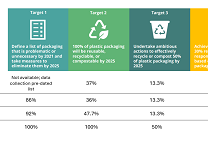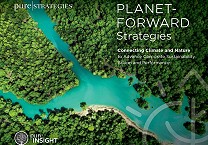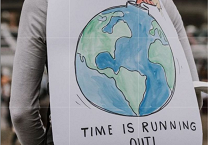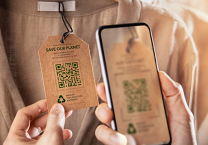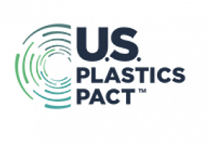One year away from 2025 packaging goals; how close are we?
by Cheryl Baldwin, PH.D.
06 May 2024
The wave of sustainable packaging commitments set a few years ago will expire in 2025. Many of these are aligned with the Ellen MacArthur Foundation’s (EMF) New Plastics Economy Global Commitment and country-level “pacts.” These programs focus on plastic packaging aims. Now, just a few months away from 2025, how close are companies to meeting these goals?
The U.S. Plastics Pact is part of the EMF New Plastics Economy program[1], which includes one-third of the plastic packaging in the U.S. The U.S. Plastics Pact was established in 2020 and has been reporting annual progress. See the image below that summarizes the status.

Notable progress has been made in removing items on the U.S. Plastics Pact Problematic and Unnecessary Materials List (see Target 1), including polyvinyl chloride (PVC), polystyrene (PS), and problematic label constructions. Companies may understand the need to remove visible issues such as expanded PS, but most organizations do not know what problematic label constructions are, let alone have evaluated their packaging for these issues. Yet, addressing label designs is one of the quickest wins companies can gain.
Pure Strategies helped Walmart and FMI develop their guidance on designing for recyclable packaging. These guides compile information from the Association of Plastic Recyclers and others to outline labels that are compatible with recycling systems, along with other component decisions to consider. We find that many packaging teams benefit from using guides like these and training on how to design for recycling.
For Target 2, progress looks to be less notable, with just under half of plastic packaging being recyclable. It is worth understanding that the U.S. Plastic Pact uses the EMF's unique definition of “recyclable,” which includes considerations for “in practice” and “at scale”. The concept of in practice is a typical evaluation of whether the package has an effective existing recycling system in place and ensuring the design is compatible with that system. The added element of at-scale factors in the level of consumer participation in this system – with a threshold of at least 30% recycling rates.
As a result, globally, the potentially recyclable containers include polyethylene terephthalate (PET) bottles, high-density polyethylene (HDPE) rigid containers, polypropylene (PP) bottles, and >A4 mono-material PE flexibles in a B2B context when designed to be compatible with recycling. When one adds items such as fiber, glass, and metal packages, there are many available solutions in the market to shift from non-recyclable packages to ones that are recyclable.
Emerging laws in the U.S. on extended producer responsibility (EPR) for packaging, including those already passed in California, Colorado, Maine, and Oregon, will be pushing companies to design packaging to be recyclable in practice largely through fees that incentivize better designs (the fees then will work to help increase the scale of recycling and improve recycling rates).
The U.S. Plastic Pact reported that 0.4% of plastic packaging is reusable. There is a clear direction that reusable packaging needs to increase – including from the State of California with a goal to achieve a 25% source reduction by plastic weight and by plastic component, with at least 10% of the covered material source reduction from shifting to refillable or reusable, or through eliminating a plastic component by 2032.
A common challenge with shifting to reusable packaging is ensuring that the corresponding packages used for refills are recyclable or compostable. This is an area with notable innovative solutions emerging, such as fiber pouches or PE pouches with enough barrier properties and also being compatible with existing recycling streams (for paper and store drop-off, correspondingly). Walmart set up the Packaging Circular Connector to help companies find more sustainable packaging solutions like this more easily.
Target 3 focuses on the level of recycling happening in the market. The U.S. EPA has been a primary source for this data, and the last time the status was reported was in 2018 when 13.6% of plastic containers and packages were recycled. The U.S. EPA has a Draft National Strategy to Prevent Plastic Pollution expected to be finalized soon (the EPA is reviewing comments received on the draft as of the writing of this article). The draft includes plans to improve this data collection as a part of objective B of the strategy. So, new data is not expected for some time. The draft strategy also includes efforts to increase the recycling rate.
- Objective A: Reduce pollution during plastic production.
- Objective B: Improve post-use materials management.
- Objective C: Prevent trash and micro/nanoplastics from entering waterways and remove escaped trash from the environment.
The last target for the U.S. Plastics Pact is to use recycled content (see Target 4). Slight increases have been achieved over three years, but progress is far from the target. Rigid HDPE and PET containers have the highest average recycled content at 5-16% post-consumer recycled (PCR) content.
In the U.S., states are enacting laws to drive progress with recycled content. In addition to some of the EPR laws, California, Connecticut, Maine, New Jersey, and Washington have targets to increase the recycled content of packaging, with additional laws on bags. For example, Maine has a goal for beverage containers to have 30% PCR by 2031.
While the 2025 end-of-life and recycled content targets for plastic are not yet close to being met, there are reasons to be optimistic about future progress. U.S. laws are pointing to clear incentives for making progress, the U.S. EPA national strategy expected soon, and global alignment through the legally binding Global Treaty on Plastic Pollution expected in 2025 all point to a common path of more responsible and circular packaging. Further, there are notable examples in the market, and promising innovations are emerging. For example, supplement company True Grace has a PCR plastic container with corresponding refill pouches made from responsibly sourced sugarcane that they claim leads to less overall plastic use. However, it appears that the refill pouch is not yet widely recyclable - an area of active innovation across industries.
Clearly, companies need to take action to have more sustainable packaging. The good news is that more solutions are available, and the path is clear: complete and maintain a packaging inventory, develop a strategy aligning with regulations and material issues, build capacity with guidance/training and supplier engagement, and support broader progress through collaborative efforts (e.g., The Recycling Partnership) and public policy. While 2025 targets will sunset soon, progress on sustainable packaging has all the signs of accelerating in the coming years.
_____________
[1] Pure Strategies is a member of the U.S. Plastics Pact.
Written by Cheryl Baldwin, PH.D.
Cheryl Baldwin, Ph.D., is a Vice President of Sustainability Consulting for Pure Strategies where she partners with corporate clients to develop and execute sustainability strategies to improve performance across retail, food and agriculture, home and personal care, and cosmetics industries. She also leads the firms’ global market research to generate new insights to accelerate business transformation.
Cheryl’s recent projects include helping develop sustainability goals for TAZO, create a sustainable packaging strategy and implementation tools for Walmart, and facilitate the development and implementation of a sustainable chemistry program for Ahold Delhaize USA.
Cheryl authored Pure Strategies’ market research reports, Connecting to the Farm, Reaching the New Corporate Frontier, Advancing on the Path to Product Sustainability, and other reports. She wrote the book, The 10 Principles of Food Industry Sustainability and is the lead author/editor for two additional books on sustainability, Greening Food and Beverage Services and Sustainability in the Food Industry and holds U.S. and international patents.
Prior to Pure Strategies, Cheryl led the life cycle research and sustainability standard program for the non-profit ecolabel organization Green Seal. Cheryl also worked in Research and Development for Kraft Foods, Inc. where she was involved in all phases of R&D from novel ingredient development to global product commercialization. Cheryl holds a Ph.D. and M.S. from Cornell University and a B.S. from the University of Illinois, all in Food Science.
Cheryl has been named one of the Top 50 Women Leaders of DC for the second consecutive year, based on a methodical review of women executives and leaders across the area. She was identified for her career track record, including her leadership position at Pure Strategies. The recognition came from Women We Admire (WWA), a membership organization of over 1,200 of the most accomplished women leaders in business, law, consulting, education, non-profit and other sectors. based on a methodical review of women executives and leaders across the area. She was identified for her career track record, including her leadership position at Pure Strategies. The recognition came from Women We Admire (WWA), a membership organization of over 1,200 of the most accomplished women leaders in business, law, consulting, education, non-profit and other sectors.



